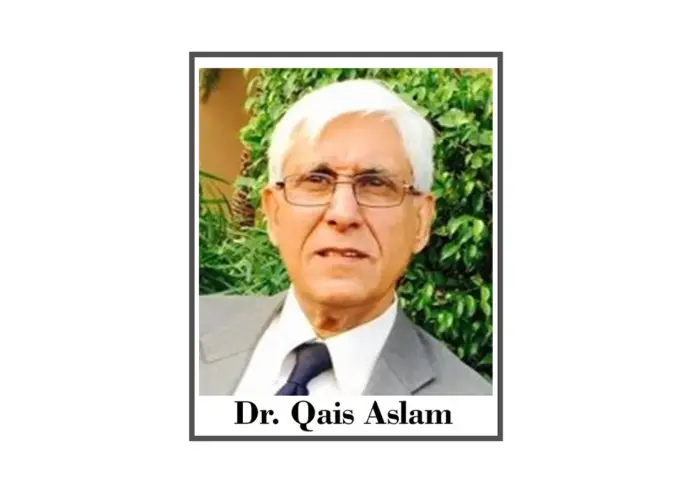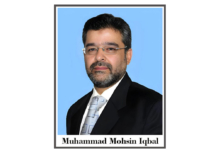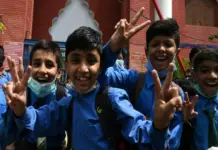Out of 230 million Pakistanis in 2022 almost 80% live with an income below Rs. 1,000 (US $ 4) a day. The official minimum wage in Pakistan is Rs. 25,000 (US $ 108) a month or Rs. 833 (US $ 3.6) a day, when many Pakistani families do not receive this minimum wage for their daily work in the country. Per capita income of Pakistan in 2022 is US $1800 (Rs. 414,000) a year or Rs. 1,134 (US $ 5) a day, just above the minimum wage. Women do not have equal opportunity to men in many fields of life. Even poorer men do not have equal opportunities to their more fortunate richer colleagues in the country due to lack of facilities, lack of opportunities and due to lack of reforms governing the life and property of the citizens of Pakistan.
SDG 10 ‘Reduce Inequality within and among countries’ states that “Inequality within and among countries is a persistent cause for concern. Despite some positive signs toward reducing inequality in some dimensions, such as reducing relative income inequality in some countries and preferential trade status benefiting lower-income countries, inequality still persists. COVID-19 has deepened existing inequalities, hitting the poorest and most vulnerable communities the hardest. It has put a spotlight on economic inequalities and fragile social safety nets that leave vulnerable communities to bear the brunt of the crisis. At the same time, social, political and economic inequalities have amplified the impacts of the pandemic … Inequalities are also deepening for vulnerable populations in countries with weaker health systems and those facing existing humanitarian crises. Refugees and migrants, as well as indigenous peoples, older persons, people with disabilities and children are particularly at risk of being left behind. Recent devastating floods in Pakistan due to climate change and global warming have further increased inequality in Pakistan, making the poor poorer and the rich richer.
Census 2017 shows that there are 32 million households in Pakistan, out of which 80% (25.6 million) live below or above the poverty line, but are poor. The rest 20% (6.4 million) are considered moneyed classes and strata. Miftah Ismail (former PML(N) Finance minister recently stated that ‘Pakistan is a democracy for the upper 1% elite’, while the rest of the population cannot avail opportunities to go up the ladder of success as in the richer part of the world. Former governer SBP Ishrat Hussain also wrote a book titled ‘Pakistan an Elitist State’ pointing toward the resources being amassed by the rich and the powerful through misuse of both economic as well as political power and living ‘above the law’. The upper 1% elite totals to 2.3 million people or 0.32 million households.
As per GDP Pakistan’s economy is ranked 24th largest worldwide with GDP of US $347 billion, just four slots short of G-20 leading economies, where USA (GDP of US $20.89 trillion), China (GDP of US $ 14.72 trillion), Japan, (GDP of US $ 5.06 trillion) Germany (GDP of US $ 3.85 trillion), UK (GDP of US $ 2.67 trillion) are the leading five economies, followed by India, France, Italy, Canada and South Korea as the 10 leading economies in the world.
Inequality around the world is measured by the following indicators – income inequality, poverty rate, poverty gap, discriminatory family code, violence against women, women in politics, social institutions and gender, housing overcrowding. A LUMS study points out that in Pakistan, “The wealthiest 10 percent of households own 60 percent of household wealth, while the least wealthy 60 percent own just one-tenth of it”. The report further points out that, “From 2001/02 to 2015/16, the top 10 percent of households captured 24 percent of the total income growth compared to those in the bottom 50 percent who captured 32 percent of the income growth” Dr. Hafeez Pasha points out that, in the rural areas of the country, “The top one per cent of farmers own as much as 20 per cent of the farm area. The top 20 per cent own 69 per cent” of farm area in the country. At the bottom end, a small farmer has only 0.3 hectares on average”. Dr. Pasha further points out that “One of the major reasons for the shrinking of the middle class in Pakistan is the rising unemployment among educated workers, partly due to a decline in value added exports of Pakistan caused by the increasing competitive pressures in a rapid process of globalization.” A research thesis by Ali Ahmed points out that in Pakistan, “The top 1% income share is 30.2%, the top 0.1% share is 13.4% and the top 0.01% share is 5.1%. The middle 40% share is 30.0% and the bottom 50% share is at a mere 11.6%”.
Data on discriminatory family codes (for women and children) in Pakistan is very high at 59%. Under the heading of discrimination in the family is shown at 80%, restricted physical integratory is at 37%, restricted access to productive and financial resources for women is at 60%, restrictions to civil liberties is at 53%. The male MP to female MP ration in politics is 75% males to 25% females.
In order to achieve the goal of SDG 10, the mess that has been created in the last 75 years in Pakistan due to the usurping of assets by the powerful elite and because of depriving the poorer majority of their political and economic rights has to be reversed through a thought-out long term policy initiative. On one side the four factors of production – land, labor, capital and entrepreneur (organization) – have to be kept in mind, followed by political, judicial and administrative reforms that help the children of the poor and the vulnerable to be able to gain skills and opportunities that remove inequalities and enhance wholistic economic growth as well as protect the environmental assets of the country for longterm sustainability.
Ensuring property rights of the poor, especially women and children, so that they can safely use and earn a sustainable income from their assets without fear of the land mafia usurping their land for illegal housing societies. Also new opportunities through fiscal policy have to be created so that the younger generation can find new innovative ways of doing and sustaining their businesses, especially among poorer section of the societies. Robust and transparent institutions have to be created and sustained that are people oriented and not elite specific. Export facilities should be allowed to SME and startups, especially from less developed areas and section of the society for greater linkages with rest of the world. A new and sustained system of education has to be developed for our children that enhances the skill based, analytic thinking processes among the children of the poor so that they can enhance their opportunities of earning incomes in line with modern standards without fear of being left behind.
Environmental assets should be protected and used wisely in a sustained manner, so that the economic needs of the present as well as the future generations are not compromised between these generations and between different sections of the present generation. Legal framework has to be developed with a new well established judicial as well as administrative set up that does not compromise its own reputation due to corruption and embezzlements and work for the welfare of the people in a judicial manner. Rights of women, children, transgender and even men have to be protected by government sector, private sector and the society as a whole for inclusive reduction of inequalities of different kinds. It might be a tall order, but when societies decide to change for the better for the sake of its children and grandchildren than the policy makers and policy enforces have to create a new mind frame among themselves so that Pakistan is respected among community of nations as a progressive evolving nation, that, through economic, political, educational, judicial and administrative reforms, can change the destiny of its people for the better. It just needs political will of the elite to let go their hold and learn to share.
An educated, equitable and just Pakistan would also increase the capacity of the asset holders to earn more profits through enhanced skills and productivity of its labor force. The country with little effort can transform from a rent-seeking environment towards a profit-making environment for most, if not all, of its population if we plan for the next 20 years in a comprehensive manner. Thus, can reduce different types of inequalities substantially. But efforts in the right direction have to be made now, today.







